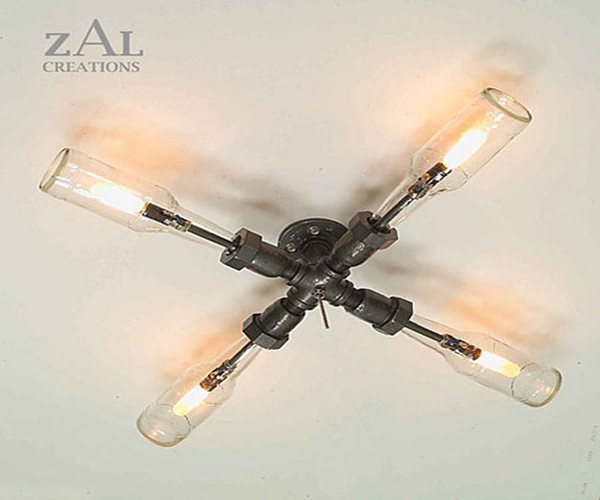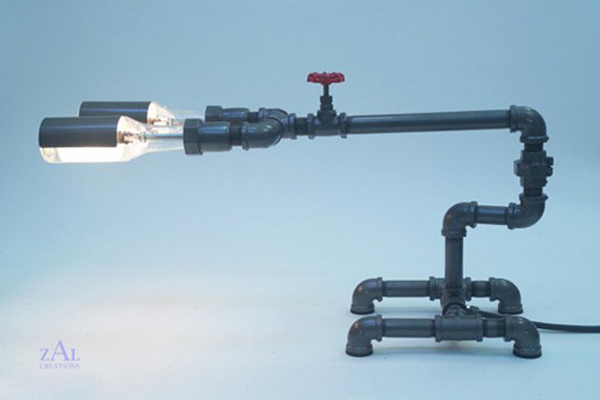Alternative water pipes bottle LED Lighting






More imformation about MR16 LED and e27 led in cpbay


























A semiconductor gas sensor
This type of sensor in about 60% of the Gas Sensor is divided into according to their mechanism of conductivity and non-conductivity type, surface type and volume control type conductivity type is divided into.
(1) of SnO2 semiconductor is a typical surface-type gas sensor, its sensing principle is the S nO2 for n-type semiconductor materials. When voltage is applied, the semiconductor material temperature increases, the adsorbed oxygen to accept electrons in the semiconductor to the formation of O2 or O2 the immunogenicity gas H2, CO, the presence of CH4, so that the semiconductor surface resistance decreases, the conductance rose, conductance change and The gas concentration is proportional to the inverted. NiO is a p criminal semiconductor, oxidizing gas conductance decreased O2-sensitive. ZnO semiconductor sensors fall into that category.
Semiconductor gas sensors
a conductivity type of Sensor element is divided into surface-sensitive and volume-controlled, surface-sensitive sensor material for the SnO2 + Pd, ZnO ten of Pt, of AgO, V 205, the metal phthalocyanine green, Pt-SnO2. Surface-sensitive gas sensor can detect gases for a variety of flammable gas C0 and NO2 Freon. . Sensing material Pt-SnO2 gas sensor can detect gas, combustible gas CO, H2 CH4.
b The volume control sensing material for Fe2O8, la1-SSrxCOO8 and TiO2, CoO-M GO-SnO2 in the sensor can detect gases for a variety of flammable gas C0 and NO2 Freon. . Sensing material Pt-SnO2
Volume-control-type semiconductor gas sensor can detect gases for liquefied petroleum gas, alcohol, air-fuel ratio control, combustion furnace gas exhaust.
(2) volume-controlled change of the lattice defects electricity pregnancy rate changes, and conductance change is proportional to gas concentration.
Fe2O8, Ti O2 is such a sensitive flammable gas.
(3) hotline sensor, the change of the thermal conductivity of semiconductor sensors, also known as the hotline semiconductor sensors, P t wire coil coating SnO2 layer, P t wire in addition to starting the heating effect, there is the detection of temperature changes function. Applied voltage semiconductor gets hot, the surface oxygen, so that the free electron concentration, the presence of flammable gas, combustion consume oxygen free electron concentration increases, the thermal conductivity with the concentration of free electrons increases, the cooling rate is increased accordingly, so that Pt wire temperature decreases, the resistance decreases, P t wire resistance changes in gas concentration as a linear relationship.
This sensor is small size, stability, anti-drug and can detect low concentrations of gas, plays an important role in the detection of combustible gases.
(4) non-conductivity type FET field-effect transistor gas sensor, the Pd-FET. The field effect transistor sensors, the use of Pd absorption of H z and spread to reach the interface of the semiconductor si and P d, reducing the work function of Pd, which is sensitive to H2, CO. Non-conductivity type FET field-effect transistor gas sensor, small size, easy integration, multi-function gas sensor is promising.
(2) solid electrolyte gas sensor
This sensor element for the ion conductive solid electrolyte separator, known as the electrochemical cell is divided into cation conduction and anion conduction is highly selective sensors, to achieve more practical zirconia solid electrolyte sensor, the mechanism is the potential difference between divide both sides of the two battery is equal to the concentration cell potential. The stability of chromium oxide solid electrolyte sensor has been successfully applied to the determination of oxygen in the molten steel and engine air-fuel ratio of the composition measurement.
To compensate for the solid electrolyte conductivity less than in recent years, Yan-plated layer of gas sensitive film on the solid electrolyte, Wai Zhou environment, the number of gas molecules and the media can move the number of particles linked.
(3) exposure to combustion gas sensor
The contact combustion-type sensor distributor for combustible gas of H2, CO, CH4 detection. The combustible gas contact with the surface of catalyst
Pt, Pd, burning, breaking hot, burning heat and gases to thick rich. Wide range of applications of this type of sensor, small size, simple structure, good stability, and the disadvantage of poor selectivity.
4. Electrochemical gas sensors
Electrochemical approach commonly used in gas sensors, there are two
(1) constant potential electrolysis sensor
The measured gas in a given electric field ionization, the gas concentration measured by the flow through the electrolytic current, the high sensitivity of this sensor, changing the potential alternative inspection pure gas, toxic gas detector has an important role.
(2) the primary cell type gas sensor
In KOH electrolyte solution, pt-Pb or Ag-Pb electrode constitute a battery, has been successfully used for the detection of O2, its high sensitivity, the disadvantage is permeable oven to absorb moisture, the electrode is easy to be poisoned.
5 Optical gas sensing din
(1) direct absorption of the gas sensor
Infrared gas sensor is a typical absorption optical gas sensor is based on the gas, respectively, with their inherent spectral absorption spectrum detection of gas composition, non-dispersive infrared absorption spectrum of SO2, CO, C O2, NO and other gases with high sensitivity.
Addition, UV absorption, non-dispersive ultraviolet absorption, related spectrophotometry, the second derivative, since the modulation of light absorption of NO, N O2 SO2, CH (CH4) and other gases with high sensitivity.
(2) light reaction gas sensor
The light reaction gas sensors, gas reactions to produce discoloration caused by the optical properties of light intensity absorption change, the sensing element is an ideal, but the gas light perception changes is restricted, the sensor degree of freedom is small.
(3) gas optical properties of new sensor
Optical fiber temperature sensor for this type of catalyst and gas reactions, fever coated fiber top. Temperature change, resulting in the change of optical fiber temperature. Fiber temperature has reached a practical degree of gas detection is successful.
In addition, other physical changes to measure the composition of the gas sensor development, such as surface acoustic wave sensors to detect SO2, N of O2, of H2S, of NH3, H2 and other gases have a higher sensitivity.
from:http://cpbay.comicspace.com/2012/06/28/classification-of-gas-sensors/